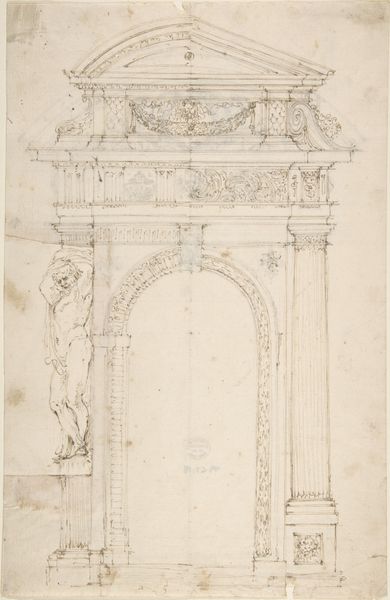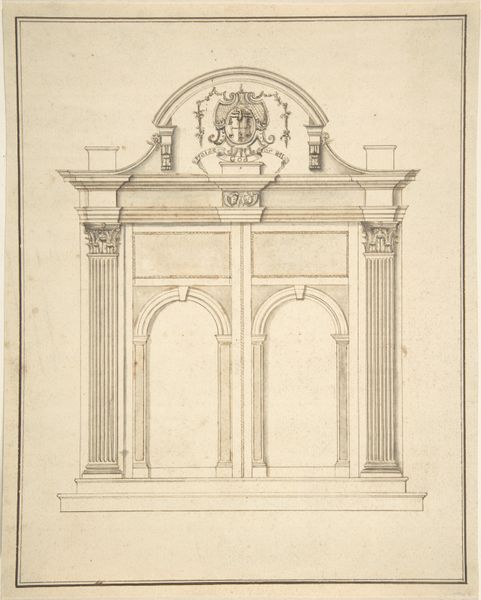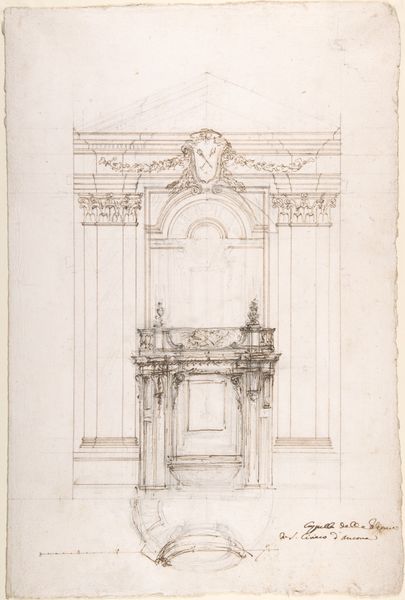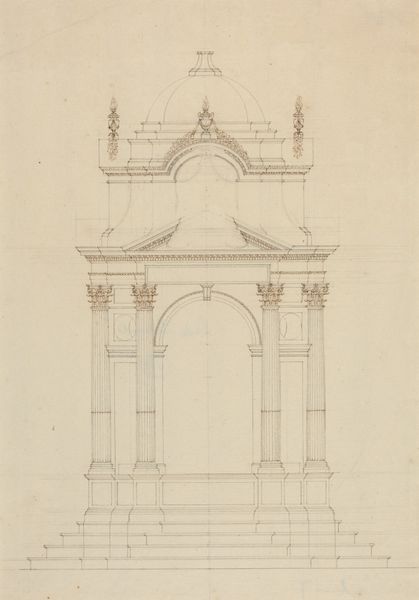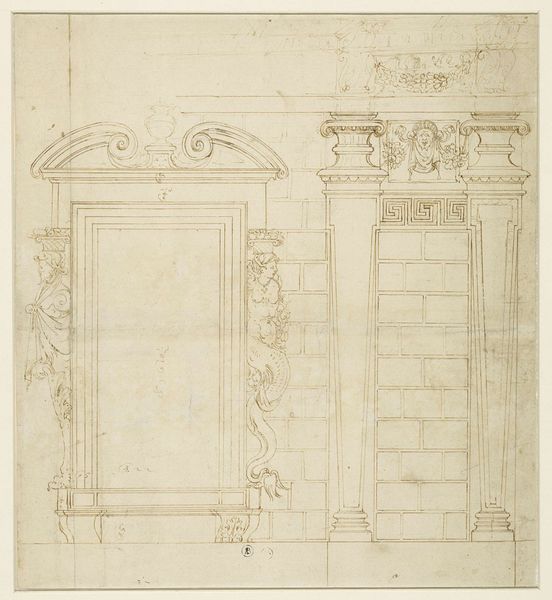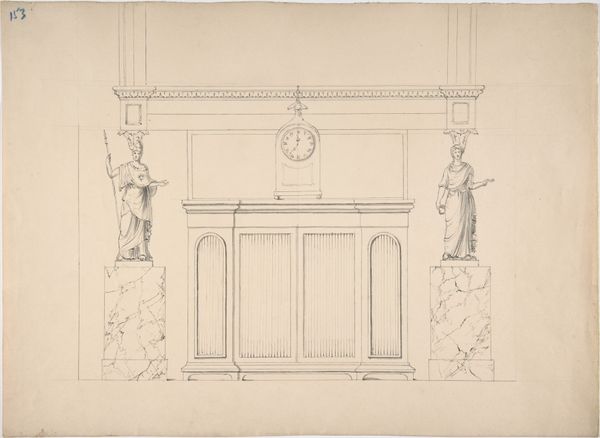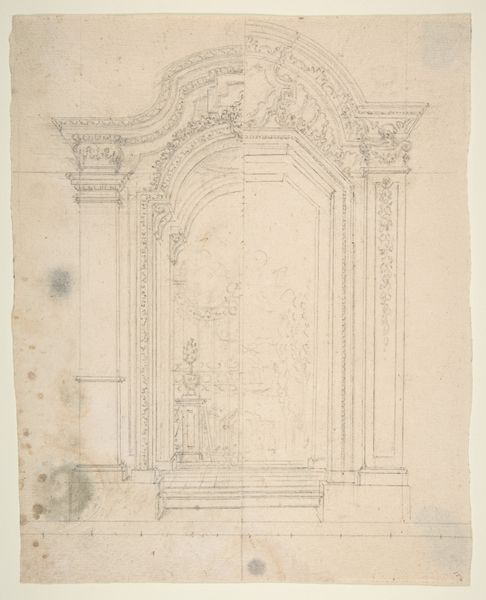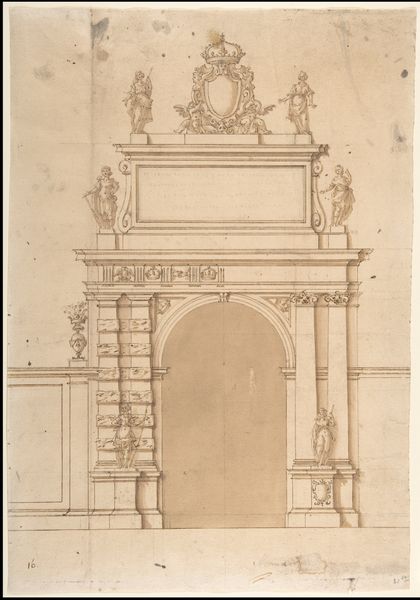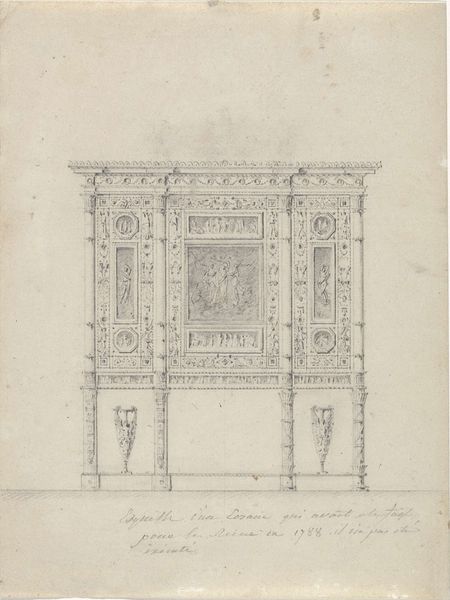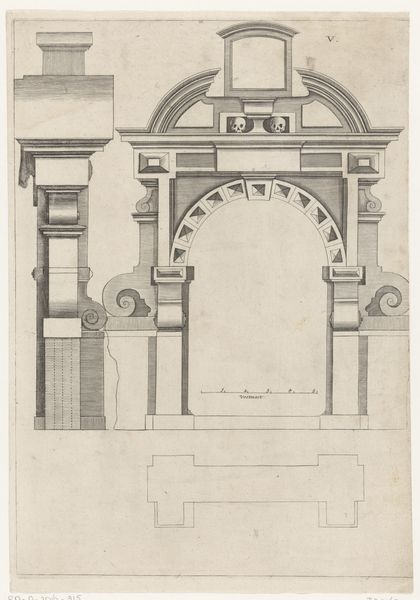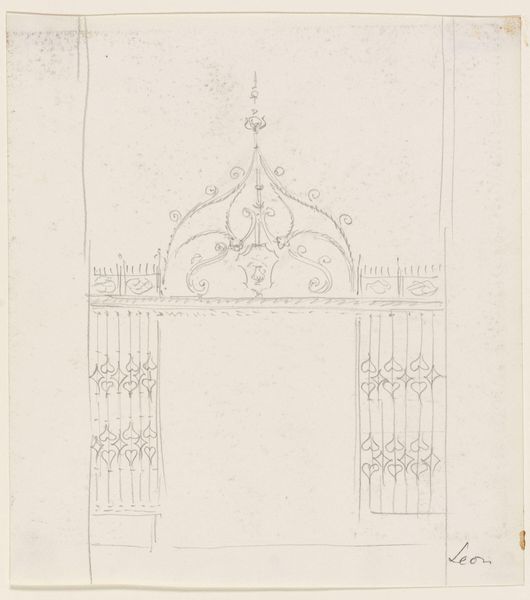
drawing, paper, ink, architecture
#
drawing
#
etching
#
paper
#
form
#
11_renaissance
#
ink
#
architectural drawing
#
line
#
history-painting
#
italian-renaissance
#
architecture
Dimensions: height 465 mm, width 313 mm
Copyright: Rijks Museum: Open Domain
Curator: Pompeo Leoni gave us this stunning "Ontwerp voor een ereboog", or "Design for a Triumphal Arch" if you prefer, sometime between 1543 and 1608. Look closely—it’s ink on paper, and the detail is incredible. Editor: My first impression? It feels like a whisper. All those delicate lines hinting at grandeur, but with such lightness. It's almost dreamlike. Curator: Absolutely. This isn’t just a blueprint, it's an exercise in imagining power. You can feel the Renaissance ambition pushing at the limits of the paper. Editor: That arched entryway almost centers the viewer. The symmetry, though—it suggests a very particular type of access and celebration, right? Who gets to pass under that arch? Curator: Indeed. Triumphal arches are inherently political statements. I wonder, what sort of triumph was Leoni envisioning here? And for whom? Perhaps he had someone specific in mind... Editor: Looking at the sculptures in the niches – these figures feel very performative, staged somehow. Not about lived experience, but crafted for show, what we’d call it today, *image making.* It invites reflection on power and visibility – both then and now. Curator: Image is everything, wouldn’t you say? The details…those carefully etched lines hinting at texture and depth…it all adds to the overwhelming sense of constructed authority. There are little faces carved within that arch itself, could these be classical references? It certainly begs further scrutiny, but ultimately for me the sketch vibrates with its inherent possibility for pomp and power. Editor: For me, the emptiness within the central arch becomes its own statement, its invitation for social commentary and protest. What absences mark such celebrations of triumph? Which histories, lives, are purposely forgotten for one side to rejoice at the expense of the other? Who doesn’t get a statue here, or indeed *anywhere*? Curator: That tension—between the celebration of victory and the acknowledgement of absence—is so crucial to understanding works like this. It pushes us to look beyond the surface grandeur. A testament, indeed, to your eye as a critic, but also to this artist. Editor: Exactly, as you said – image is everything. Curator: Thanks for opening my eyes once more. Editor: Likewise!
Comments
No comments
Be the first to comment and join the conversation on the ultimate creative platform.
